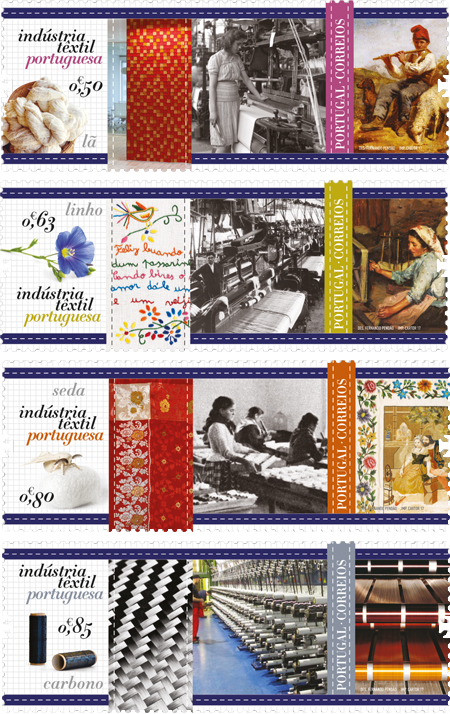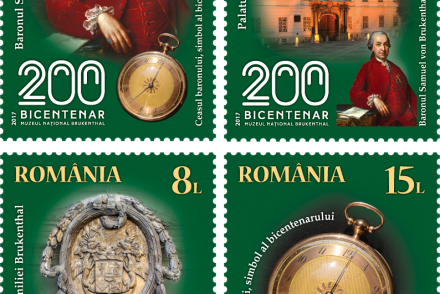Portuguese Textile Industry
Portugal – While domestic textile production has existed in Portugal since immemorial times, the Portuguese textile industry more broadly has been bound up in each successive paradigm shift to have emerged in the Western world: from the textile societies dating from the birth of the nation in the 12th century to the 17th century; to the manufacturing and mercantile paradigms of the 17th and 18th centuries; to the three industrial revolutions dating from the second quarter of the 19th century to the late 20th century, with their technological and scientific innovations; to the age of globalisation, the fourth revolution, dating from the late 20th century to the present day, which has brought together all spheres of knowledge and practice and seen the development of smart fabrics. State intervention in the textile manufacturing process was always important, with regulations withdrawing so-called “false fabrics” from the market and in the process condemning or privileging certain artisans, regimenting production in order to guarantee quality, establishing large production units such as the Royal Factories and through awarding commissions, imposing tari s and establishing standards of safety, hygiene and industrial relations and working conditions. There is no other industry more human, more propitious to metaphor or blessed with a richer imaginary than the textile industry, and numerous artists and writers have used the production methods and vocabulary of textiles as a vehicle of vibrant expression. The spinner and the weaver, the tapestry maker and the dyer, the model and the fabric designer have all inspired famous paintings in the Western world, including works by Portuguese artists who followed in the footsteps of Velázquez and reproduced several mythical gures of Classical Antiquity, such as Athena, inventor of the spinning wheel, and Arachne, the young woman whose weaving was so skilful as to arouse the envy of the goddess. Both have come to symbolise aspects of the textile industry: the skill and knowledge required; the beauty and comfort of the human being; the challenge and commitment to the task; the present and the future.
The Portuguese territory is host to some excellent quality natural bres of plant-based origin, such as linen, and others of animal-based production, such as silk and wool. Linen and wool are produced across the country, while silk was only produced in certain areas, including the centre of Lisbon and, curiously, the country’s northern interior. On the other hand, fabrics made from the plant that gave rise to the industrial revolution, cotton, came originally from the lands of the discoveries, sometimes already stamped. Nonetheless, from the 18th century onwards cotton gained a central position in the Portuguese economy, particularly in the Ave River valley. The entire linen making process, from sowing to bleaching the woven cloth, has left an indelible mark on Portuguese culture, with Galician and Moorish linen showing a country with two faces. Wool is also derived from two main breeds of sheep, the churra in the north, and the merino in the south around Serra da Estrela. The city of Bragança is closely associated in Portugal with silk, just as the city of Covilhã has long been associated with wool. The Ave River is sometimes called the “Rio do Algodão” [River of Cotton], as it was in its basin that the main cotton fabric producers were historically established and continue as part of the economic fabric to this day. While the city of Porto was always industrially active, everything could be found in Lisbon, like the rst great Atlantic warehouse for the many exquisite goods coming from the old Eastern Mediterranean, the mainspring of western civilization.
Renaissance modernity brought classical culture with it, a rming the dignity of man and paving the way for the declarations of rights from the 15th to the 18th centuries. In this period, textile production was closely regimented, which served to improve production quality and expand the market. The following centuries saw the expansion rstly of technique and then of science, corresponding to the rst and second so-called industrial revolutions. While the country did not undergo a revolution in its agriculture, it did notably industrialise its textile and clothing industries. Portugal is now making strides towards the development of smart fabrics and will be at the forefront of the global evolution of fabrics which combine natural, arti cial and synthetic bres, incorporating both art and science, in a vast and growing range of products.
António dos Santos Pereira Professor at the University of Beira Interior Director of the Wool Museum Member of the Portuguese Academy of History
Issue Date: 17.06.2017
Designer: Atelier Pendão & Prior / Fernando Pendão
Printer: Cartor
Process: Offset
Size: 80 x 30,6 mm
Values: €0.50, €0.63, €0.80, €0.85



